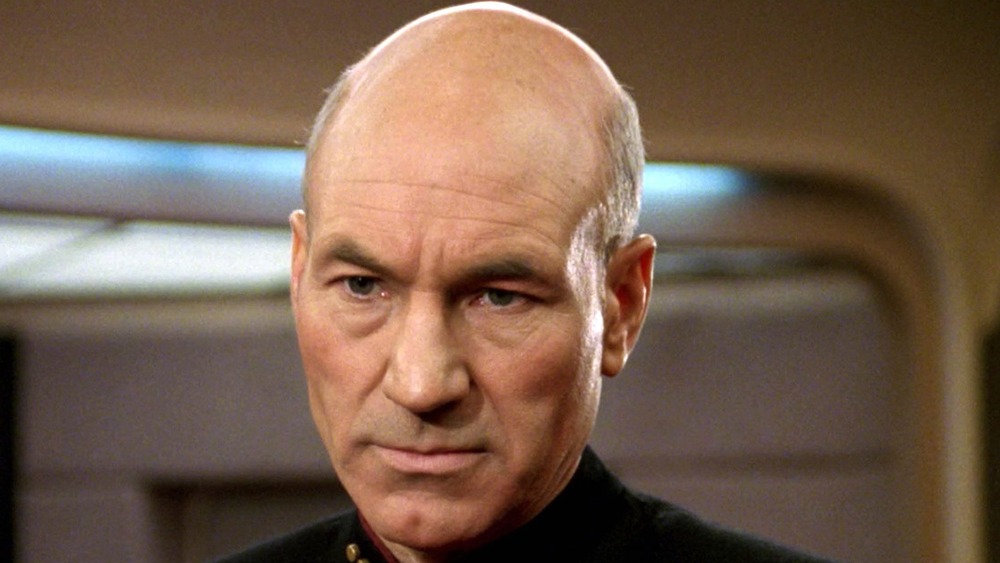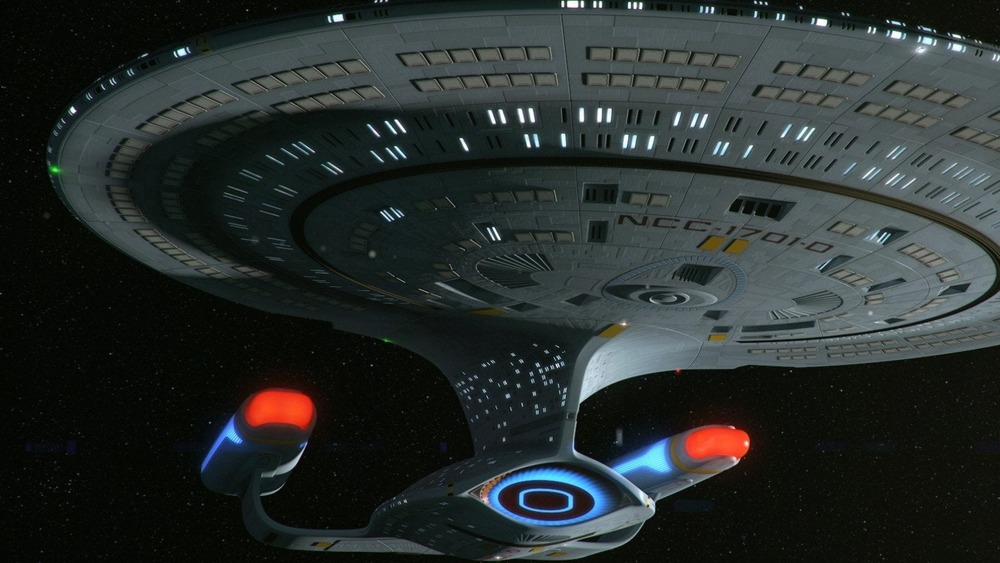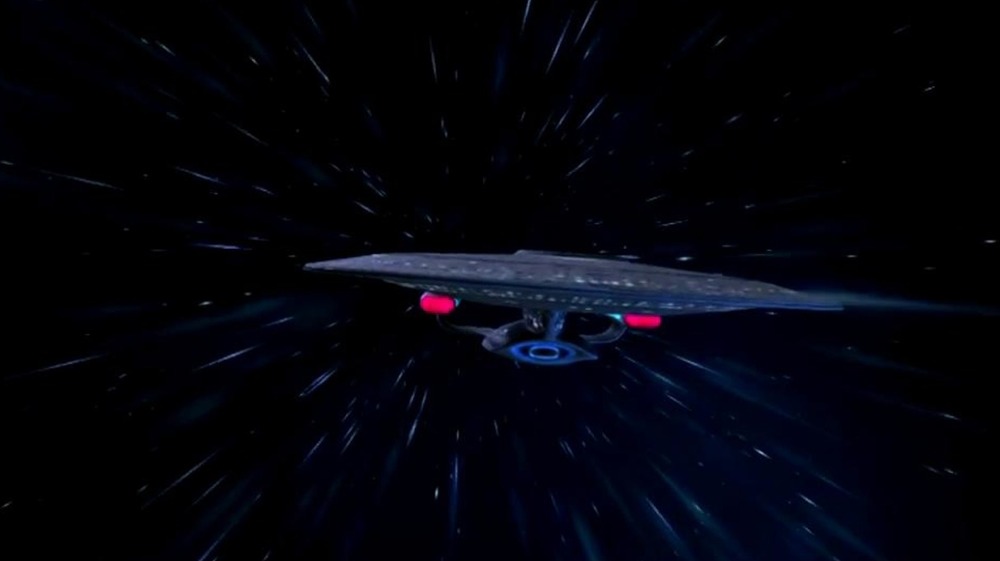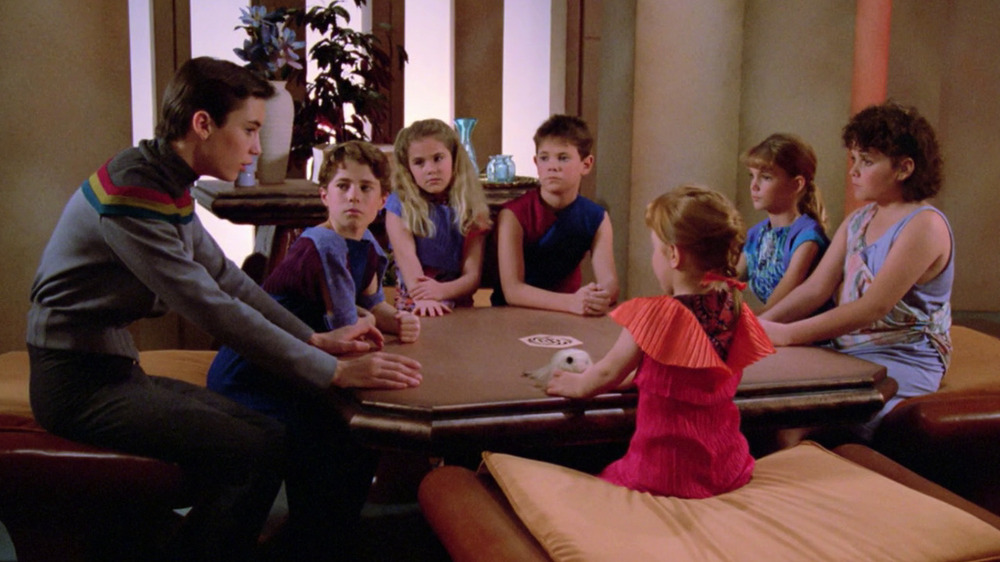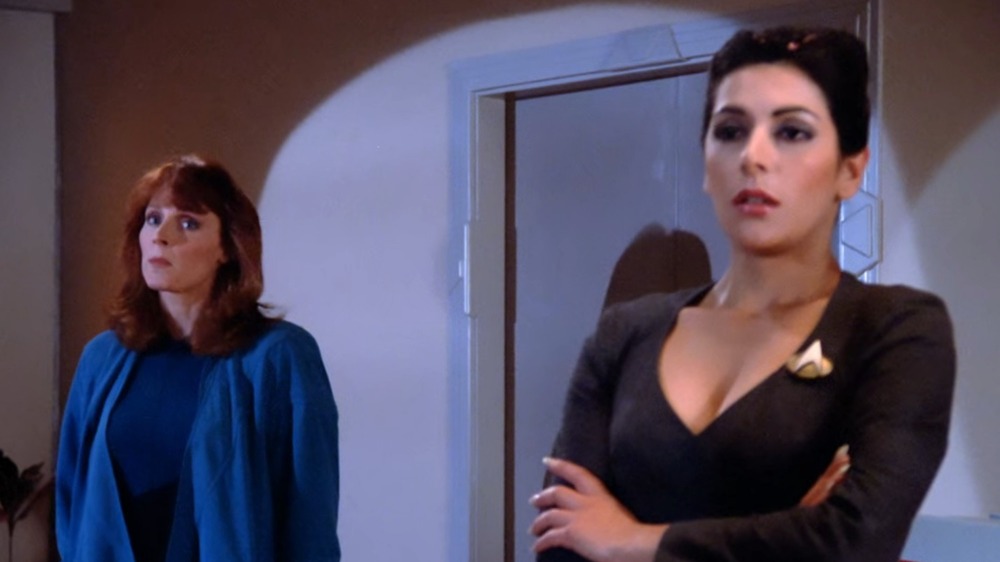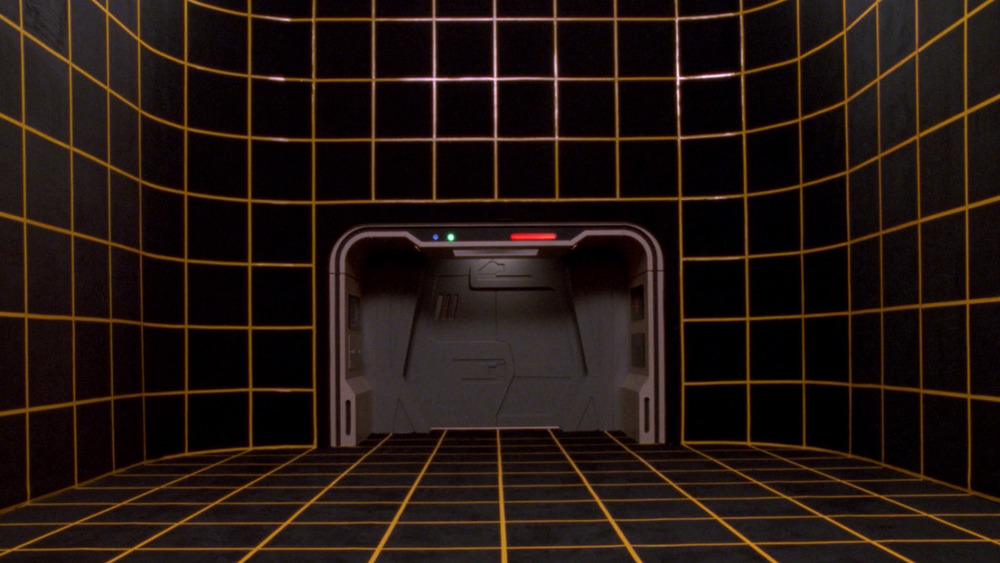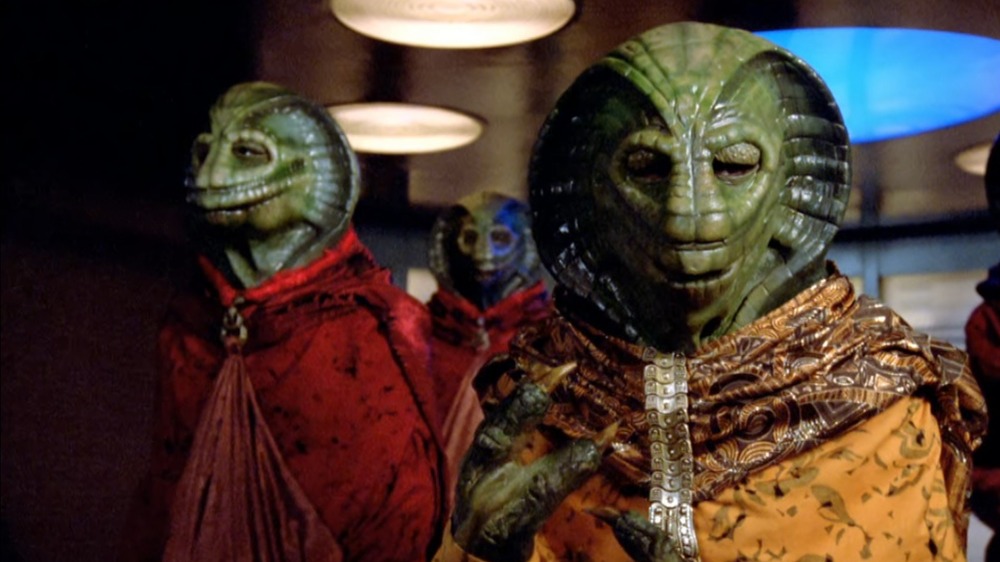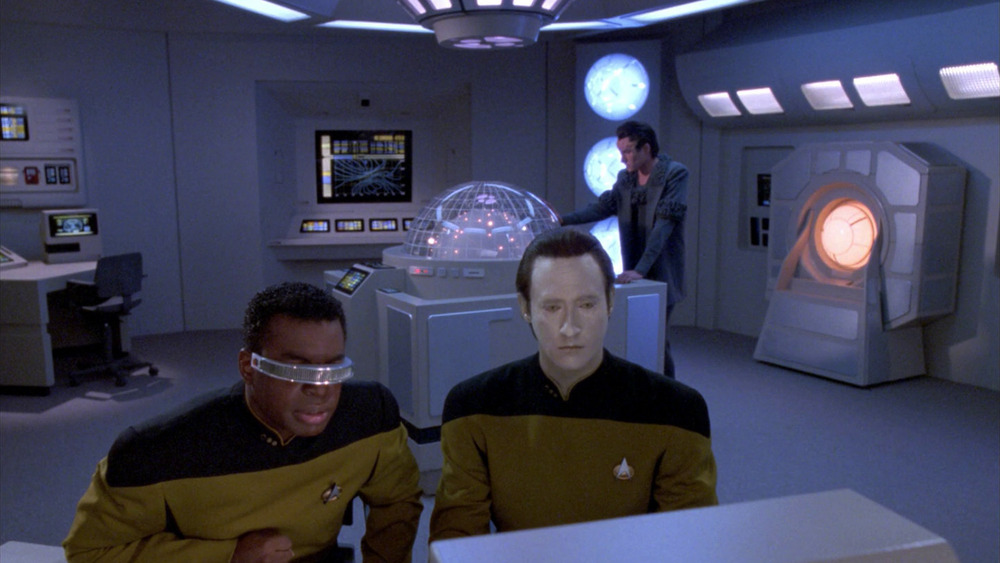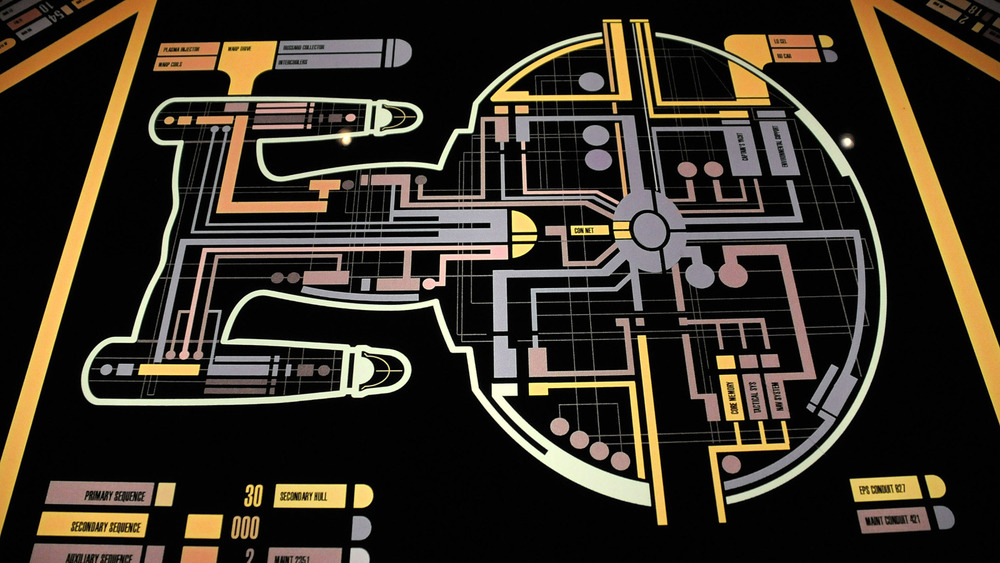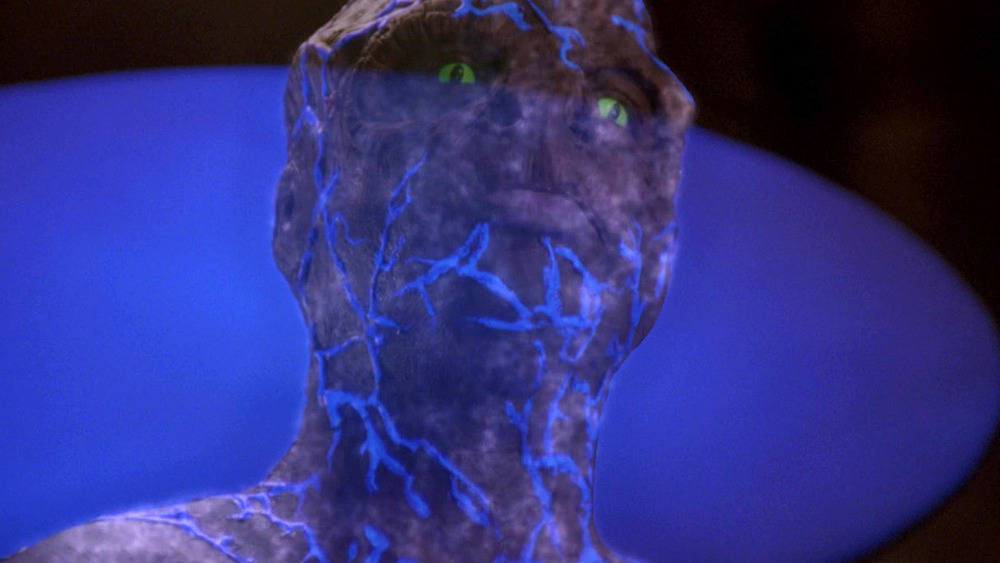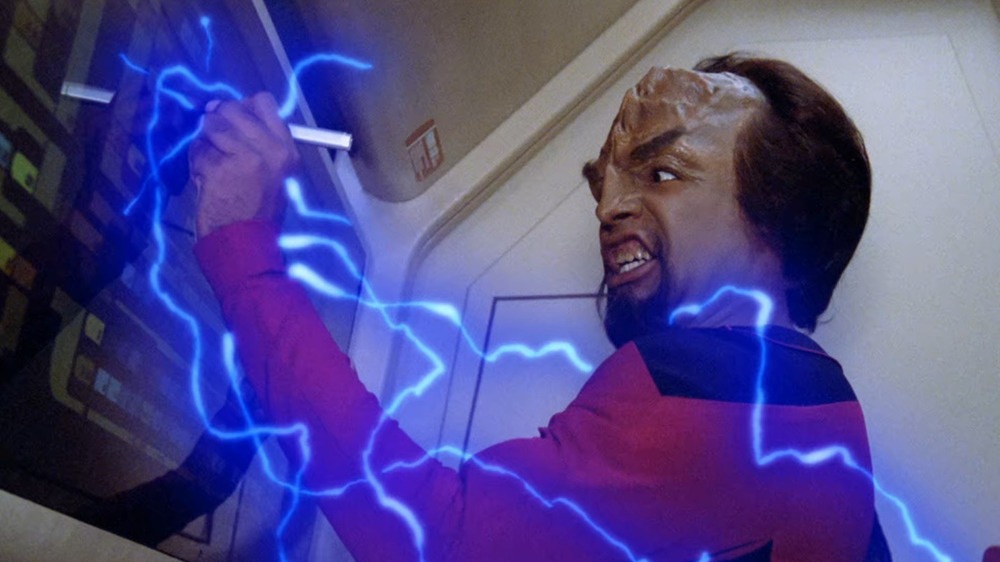Star Trek: What It Would Really Be Like To Live On The Enterprise
In a far-off future, sometime around 2364, where space travel is the norm and the United Federation of Planets has a little thing called Starfleet, many ships of all shapes and sizes set out to travel, trade, and explore the universe. They make contact with new alien races, and fight the good fight when needed, boldly going, as it were. Above all others, there is one vessel that stands out as the flagship of the fleet: the Enterprise. We want to talk about the people who call it home.
The U.S.S. Enterprise, NCC-1701-D is the primary ship of Star Trek: The Next Generation, the one that most people think of when they hear the name and the version fans were given the most extensive look at in the seven seasons of the show, four movies, and MMO Star Trek Online. Not every scene and storyline gels together to paint a clear picture what life aboard the craft would look like, but the franchise has set some guidelines. Fans have taken it upon themselves to study the starship, draw extensive schematics, and recreate it with art and 3D models, all for the dream of being on the Enterprise. There is a lot of the ship viewers never see, and from the nursery to the morgue, someone could live their entire existence there if they wanted, as one of the thousand or more people who inhabit the vessel. But what does a life like that consist of?
Floating in space
Being on a starship, even a large Galaxy-class vessel, has to be equal parts exciting and anxious, with the worst case of cabin fever imaginable for free-spirited people. We assume that those who sign up for something called "Starfleet" would be appropriately trained for, and acclimated to, existing in space. That doesn't change the fact that the inhabitants are trapped in a floating object, hurling through the darkness. That is undeniable and intimidating. It isn't like a car ride. Travel time from place to place can take a while if the captain doesn't deem it worthy of top speed, and there is precedent for missions spanning multiple years. There's mental prep to make good use of free time and enjoy the routine, but how long can that last?
It can be easy to get bored without a good group of friends or strong hobbies, and making new acquaintances with co-workers might create some awkward situations. Finding those close connections could take a while, and people do cycle in and out of the ship's complement over time — increasing the chance of losing a close friend or having less interesting people aboard for a few months. Collecting hobbies might have less meaning now, since Picard says that the need for possessions and wealth is a thing of the past — or it's difficult, demonstrated by Tom Paris, who is obsessed with collecting 20th-century paraphernalia (Voyager: "Future's End"). Thankfully, most people seem to have enriched themselves by learning a new language, art, or taking up an instrument.
Gazing into the void
Something that many don't consider about being stuck in space is that the view is horrible. It's almost all darkness, with a light sprinkling of distant stars and the occasional planet when the ship stops on its missions. For the most part, it's traveling at warp speed and passing boring light streaks outside. It's nothing like the intro of the show, which has a lot of planets and splashes of color. When the crew usually does stumble across something interesting, a fun cluster or bright anomaly, it often causes problems ("Where No One Has Gone Before"). There are a ton of lounges across the ship, for relaxing and other social purposes, with giant windows that are rarely useful.
Inside the ship, it's mostly gray hallways, bright lights, and some tan panels. The Enterprise looks comfortable, but the interior is remarkably generic. There's only so much time one can spend looking at a data pad, viewing the same art that's hanging around in the quarters, and just waiting for that next scheduled holodeck outing, unless that kind of monotony somehow sounds appealing. Another problem is that there's no natural sunlight, and the simulated day and night cycles may not be enough for some people. Maybe that makes working the night shift easier, but someone is suffering from a lack of natural sleep. At least there is that comforting hum of the engine, acting as the ship's white noise generator, but that might be a negative for some too.
There's lots of families on board the Enterprise
The Enterprise-D supports a hefty assortment of civilian crew and families, something that not many other vessels like it do. Cramming more people in means being more mindful of the civilians in dangerous situations, as well as the need for programs like daycare, schooling, and care for the family pets like Spot. There's still plenty of space for it, since the Enterprise is so large. The schematics indicate that there is a Cetacean Ops for the kids to visit dolphins, whales, and other sea life. Even if we never got to see that in TNG — though it makes an appearance on the Cerritos in Lower Decks — it's likely one of the most calming places available.
This mixture of non-military personnel can make for different sorts of tensions. Kids are growing up on the ship, going through all of those awkward stages in life and having to deal with rank and authority — even when people aren't on duty. Imagine having to worry about getting punished for beating a superior officer at racquetball or trying to date the security chief's daughter. Gossip spreads fast. The closeness of the crew also means that losing anyone could be devastating, seen first hand in "Lower Decks" from season 7, and a family may witness a tragic event happen to friends and loved ones.
The Enterprise provides everything
With all of these different people aboard, constant visitors, and a future where money is essentially obsolete, everything must be provided for those on the ship. Most casual viewers are familiar with the replicators — devices that create food, clothes, and many other vital necessities, to varying degrees of success. In stressful situations, as we see on Voyager, replicator rations are instituted to make sure people aren't needlessly 3D printing frivolous items. Each crew member is assigned free room and board, as well as a personal replicator. Replicated beverages and treats that are obtained in other parts of the ship, like Ten Forward, are also apparently free.
It seems easy for someone to take care of themselves on the Enterprise, as there is an entire medical deck where Doctor Crusher and her staff can handle almost any situation or illness. There are gyms for exercise, and we see crew members doing yoga-like activities, as well as sports and martial arts. Counselor Troi helps people with their stress, the build-up of day-to-day anxieties, and other psychiatric issues that arise. Voyager shows us that there are human-like Emergency Medical Holograms that fill in when medical personnel aren't available, so there may be similar backups for every important position on the Enterprise as well. Then there is Mot, the barber, to make sure everyone stays groomed. Overall, there isn't much that's unaccounted for, and it appears that in the future, we've outgrown the need for dentists.
Holodecks on the Enterprise
The holodeck seems like the perfect future invention. Though similar ideas were explored in earlier science fiction works, Star Trek has become synonymous with this technology. The possibilities for holodeck usage are almost endless, as demonstrated across the entire franchise. The different Trek programs show officers using these rooms to practice skills, train, reconstruct scenes for mystery-solving ("Schisms"), and even create holograms of other people ("Booby Trap") to learn from and/or love. Many members of the crew will often find themselves in a holodeck for education or work purposes, all before even mentioning the pure recreational and entertainment value.
This is the real getaway for those longer missions or when a crew member has used up all of their leave. Think of this as going to the theater or enjoying a nice day out on the town, even if the town is virtual reality. Sure, it's more ideal to go back to Earth or visit Risa, but when that isn't possible, bring those places to the Enterprise. The programming can do pretty much anything anyone would want, with incredibly realistic interactions that include tactile response. It probably can't get too X-rated, especially not after some of the things Lt. Barclay pulled, but it's never boring. They do have a reputation for messing up and making constructed characters sentient ("Ship in a Bottle") or accidentally killing a few people, but booking time for one of these is easier than trying to get in on Riker's poker game.
Alien Occupation
A starship is no place for someone who is xenophobic, given that "seek out new life and new civilizations" is one of Starfleet's goals. The Enterprise not only houses many different species, carting them around the galaxy when it hosts dignitaries, but it counts a number of them amongst its crew as well. We see everything from human-looking aliens like half-Betazoid Deanna Troi and Klingon Lt. Worf to Bajorans like Ensign Ro and a slew of other odd creatures with various kinds hair, scales, and/or unusual heads. Each of these alien races have different cultures, restrictions, feeding habits, and hatreds, but ideally, it's a big enough ship to keep them all separated. There also has to be an event organizer for all of the various observed rituals, birthdays, ceremonies, and holidays — including Captain Picard Day ("The Pegasus").
Most of these events are easily handled through diplomatic means without anyone getting hurt, but there are times when aliens who are supposed to be on the ship still cause problems. Even when they mean well, in the case of someone like the Bynars, the ship still occasionally gets taken over and nearly destroyed ("11001001"). There's also the risk of unconventional illness, like when a Sarek — in failing health — causes telepathic stress across the ship due to a rare Vulcan disease ("Sarek"). Events like that are common, and that's before discussing uninvited alien guests, such as Q. At least all of the different languages aren't an issue with the universal translators.
For science!
Serving on the flagship of the fleet is some of the best life experience Starfleet can offer because the Enterprise is constantly running across new phenomena and poking at them. Thankfully, there's a big emphasis on the sciences to help understand new species, anomalies, and space relics they uncover. Imagine how many new discoveries an eager ensign could attach their name to and the scholarly papers that are being published. The research itself is made easier with the massive amount of advanced computers, extensive databases, and a large number of labs at the crew's disposal.
We've already discussed the medical deck for those interested in healing and other surgeries — everyone wants something fixed in the future — but there is plenty of room for other experiments and projects in other fields. Keiko O'Brien is a botanist, making use of the arboretum and adding some color and life to the ship. Crewman Cutler was an entomologist aboard the original Enterprise, learning about space bugs. Captain Picard himself is heavily interested in archeology ("The Chase"), but that tends to land him in trouble whenever he takes his studies off the ship.
There's almost no privacy on the Enterprise
It's no surprise there isn't much privacy on a starship, even one so big. There are tons of empty rooms and alcoves to hide in, and even the Jefferies tubes if someone got desperate, but only so many non-trafficked areas exist outside of the personal crew quarters. Even then, those aboard the ship are constantly being tracked by the computer through the communicator badges. This little device keeps track of all the moves someone makes, and the ship can track vital signs as well ("Darmok"), so no one can call out sick or go to sleep at their station.
Computer use is logged as well, so be careful with when searching databases, even in private. Any time spent in a lab, fitness room, or holodeck is logged, so it'd be easy for anyone to establish the pattern of a fellow passenger — or for a superior officer to judge another crew member based on their routine. Furthermore, there is a person on board with telepathic abilities whose job it is to keep an eye on the crew, and Troi is good at her job. Plus who knows what alien spy technology the enemy has.
A sometimes literal loss of self
Danger comes in many different forms. Sometimes outside forces or stressful events can deeply change a member of the crew, scarring them mentally and physically. Star Trek shows have some great character development, but this is more about the literal changes that happen. Being part of the crew means facing the risks of having your timeline and memories erased or restructured, but one really bad encounter could also lead to everyone being turned into members of the Borg. If it can happen to Locutus — er, Captain Picard — it can happen to anyone.
That's not the only concern though. In the episode "Genesis," everyone on the ship de-evolved due to a botched treatment from Dr. Crusher. This left Worf with venom sacks, Troi reduced to an amphibian, Data's cat Spot turning into an iguana, and others were even worse off. An odd episode from season four has La Forge being changed into a lizard-like creature after encountering a parasite, and he's barely saved, but some other affected people were too far gone to help. One of the most interesting instances was when Counselor Troi was abducted and her physical appearance was altered against her will to make her look like a Romulan for a covert mission ("Face of the Enemy"). But it was still much better than the time she was a cake ("Phantasms"). On the plus side, the crew has a good record of recovering lost or mutated friends, at least with named characters.
The Enterprise is in constant danger
Being the flagship of Starfleet also means having to be at the forefront of most conflicts. It seems a little odd to put all of these families and non-combatants on the Enterprise and then constantly put it in every big battle, but there are protocols for these instances. The Enterprise is staffed with some of the best officers available and the ship can split into two parts for strategy or safety, but people are going to die. It's mostly nameless redshirts, but mustard yellow isn't far behind, and staying on the ship doesn't mean someone is untouchable.
One of the best examples of this comes from the episode "Q Who," when the titular god-like entity decides to show them just how unprepared for what the universe has to offer and gives the crew their first encounter with the Borg. Drones begin appearing on the ship, and the scariest moment occurs when a cutting laser slices out a section of the saucer and kills eighteen crew members. It's a memorable scene, emphasized when another engineer tells La Forge how they can't stop thinking about the dead crewmates. This is without even mentioning threats the Cardassians ("The Wounded"), Klingons, or Romulans pose. Not all dangers come from aliens, though. Sometimes there's a mind-controlling game, or no one on the ship can dream ("Night Terrors"). Then there have multiple issues with the timeline, including getting stuck in a time loop ("Cause And Effect") or history altered events that aren't always remembered but take a mental toll ("Yesterday's Enterprise"). All of these can cause some major PTSD or the desire to transfer to a lower stakes starship.
